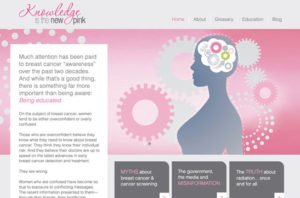With a predicted annual growth rate of 4.8 percent, the health and wellness industry is, in a word, healthy. However, one of the segments within health care expected to grow at more than twice the rate of the industry as a whole is a specialty known as “personalized medicine.”
The simple definition of personalized medicine is “the right treatment for the right person at the right time.” According to The Institute for Systems Biology co-founder Dr. Leroy Hood, there are four attributes of personalized medicine:
It is personalized, because it takes into account an individual’s genetic profile;
It is predictive, because it anticipates health problems and drug reactions;
It is preventive, focusing on wellness and not on disease;
It is participatory, empowering patients to take more responsibility for their health care decisions.
Personalized medicine is made possible by advances in genomic testing and proteomic science that have resulted in more highly targeted diagnostics and treatment options. Supporters of this approach cite increased efficiency of treatments, reduced instances of adverse drug reactions, elimination of unnecessary treatments and improved outcomes. As individuals become more aware of their individual risk, low-tech approaches like functional foods and nutraceuticals will also play an important role in personalized medicine.
In a report entitled “The new science of personalized medicine: Translating the promise into practice,” PricewaterhouseCoopers predicts:
The U.S. personalized medicine market is estimated at about $232 billion and is projected to grow 11% annually, nearly doubling in size by 2015 to over $450 billion. The core diagnostic and therapeutic segment of the market—comprised primarily of pharmaceutical, medical device and diagnostics companies—is estimated at $24 billion, and is expected to grow by 10% annually, reaching $42 billion by 2015. The personalized medical care portion of the market—including telemedicine, health information technology, and disease management services offered by traditional health and technology companies—is estimated at $4-12 billion and could grow tenfold to over $100 billion by 2015. And the related nutrition and wellness market—including retail, complementary and alternative medicine offered by consumer products, food and beverage, leisure and retail companies—is estimated at $196 billion and projected to grow by 7% annually to over $290 billion by 2015.
By all accounts, personalized medicine is a disruptive innovation, taking place at a time when the U.S. health care system is already undergoing many changes. As a result, there are several exciting opportunities for companies within the core B2B medical industry sector, which includes pharmaceutical, biotech and medical device companies:
- A reduction in the time, cost, size and failure rate of clinical trials
- The ability to command premium pricing for drugs and therapies of proven effectiveness
- Reduced number of drugs or devices recalled due to safety concerns
Healthcare providers who embrace this approach will benefit as well. According to the report, “the biggest opportunity in personalized medicine may lie in identifying new products, services and information targeted directly to consumers. Success in this space will require new approaches, new relationships and new ways of thinking.”
How does this relate to Armada clients and their marketing challenges in 2015 and beyond?
I believe the trend toward personalized medicine presents excellent marketing opportunities across the spectrum of healthcare businesses:
Device manufacturers are able to position their technologies to specialists for greater utilization within at-risk populations. For example, an individual at risk for stroke could benefit from enhanced cerebral perfusion monitoring on everything from complex cardiovascular surgical procedures to less invasive interventional radiology or orthopedic procedures. Marketing strategies include surgical team education, pre-op patient education and payer initiatives.
Biomedical testing companies can work with primary care physicians to better identify personal risk within broader patient risk categories. For example, a test that determines the effect of aspirin resistance can lead to a more personalized approach to reducing cardiovascular risk that may result in adjusted aspirin doses or alternate medications to achieve therapeutic goals. Marketing can capitalize on this with increased physician education through direct marketing and public relations targeting print and online media read by PCPs, as well as strategic partnerships with pharmaceutical companies.
Genetic testing improves the identification of cancer risk, and genomic tumor profiling results in more targeted and potentially less toxic cancer treatment with fewer side effects. For example, a hospital or diagnostic center specializing in breast health can embrace these technologies and differentiate itself from other providers in both referring physician and direct-to-consumer marketing, such as television, print, radio and digital advertising in order to attract and maintain loyal customers.
These examples represent the proverbial “tip of the iceberg” in marketing opportunity, and as history has shown, adoption can be accelerated through direct-to-consumer marketing approaches—even for companies that have previously focused exclusively on provider marketing.


